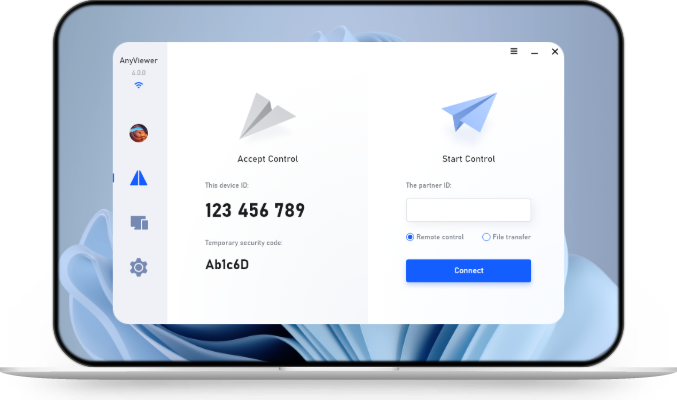How to Enable Remote Desktop on Windows Server 2019 and 2022 [4 Ways]
This post mainly illustrates 3 solutions to enable Remote Desktop on Windows Server 2019 as well as recommends the easiest way to remotely access Windows Server.
How do I enable Windows Server 2019 Remote Desktop?
Windows Server 2019 provides the capability to enable Remote Desktop, allowing users to access their device remotely using the Remote Desktop Protocol (RDP). This functionality enables users to offer assistance or control a device from a different location without needing physical presence at the device's location. However, it's worth noting that this feature is disabled by default in Windows Server 2019, requiring manual activation if you intend to utilize it.
4 ways to enable Remote Desktop on Windows Server 2019 and 2022
There are four ways to enable Remote Desktop on Windows Server 2019 and 2022. Once enabled, you can access the remote server from your local device.
Method 1. Enable Server 2019 RDP from Server Manager
To enable Remote Desktop on Windows Server 2019 with the Server Manager, use these steps:
Step 1. Click on the "Start" button and you can see Server Manager.
Step 2. Click on "Local Server" on the left in the Server Manager window. We can see that the Remote Desktop is "Disabled".
Step 3. Click on the "Disabled" text to open the "System Properties" window, and then locate the "Remote" tab.
Step 4. Tick "Allow remote connections to this computer" in the "Remote Desktop" tab.
Step 5. You’ll receive a warning message after the above step, click on "OK".
Now, Remote Desktop may still show as "Disabled"; you can refresh or press "Control" + "F5" to refresh to "Enabled".
Method 2. Allow Remote Desktop on Windows Server 2019 from PowerShell
If you can't enable RDP from Server Manager, you can try to enable Remote Desktop in Windows Server 2019 with PowerShell.
Step 1. Search "PowerShell" in the Search box and then select "Run as Administrator".
Step 2. Type the following command and then press the "Enter" key.
☞ Set-ItemProperty-Path 'HKLM:SystemCurrentControlSetControlTerminal Server' -name "fDenyTSConnections" -value 0
Step 3. By default, remote desktop connections are blocked by the Windows Firewall. Execute the following command to configure the firewall to allow remote desktop connections.
☞ Enable-NetFirewallRule -DisplayGroup "Remote Desktop"
Method 3. Empower Server Remote Desktop by using the command line
Here in this part, let's operate the way to enable Remote Desktop on Windows Server 2019 via the command line.
Step 1. Search "cmd" in the search box to open "Command Prompt".
Step 2. Type "SystemPropertiesRemote" and press the "Enter" key.
Step 3. Now you can see "System Properties". Select the "Remote" tab, and choose "Allow remote connections to this computer" in the "Remote Desktop" box.
Method 4. Using Group Policy to enable Server Remote Desktop
In addition, Remote Desktop can also be enabled by using Group Policy.
Step 1. Press "Win" + "R" and enter “gpedit.msc” to open Group Policy.
Step 2. Navigation:
Computer Configuration\Administrative Templates\Windows Components\Remote Desktop Services\Remote Desktop Session Host\Connections
Step 3. In the right pane, double click on “ Allow users to connect remotely by using Remote Desktop Services.”
Step 4. Select “Enabled” and click on “OK”.
AnyViewer: Easier way to access remote desktop on Windows Server 2019 & 2022
Remote Desktop offers convenient remote PC control, but enabling it on Windows Server versions like 2019 and 2022 requires manual setup. Alternatively, you can opt for AnyViewer, a free and user-friendly remote access software. AnyViewer supports various Windows and Windows Server OS, allowing remote access without the need for manual configuration.
Using AnyViewer on Windows Server 2019 offers several advantages over using Remote Desktop:
-
Easy setup and configuration: Setting up AnyViewer is typically easier and faster compared to configuring Windows Remote Desktop Connection, especially for users who are not familiar with networking or system administration tasks. TeamViewer offers a straightforward installation process and a user-friendly interface.
-
Remote access without VPN: AnyViewer allows remote access to Windows Server 2019 without requiring a Virtual Private Network (VPN). This can simplify remote connectivity, particularly for users who need to access the server from external networks or while traveling.
-
Additional features: AnyViewer offers additional features beyond basic remote desktop functionality, such as text chat, screen sharing, and multi-monitor support. These features can enhance productivity and collaboration for users accessing Windows Server 2019 remotely.
Step 1. Download, install, and launch AnyViewer on both computers.
Step 2. Go to the Log in tab, and then click Sign up.
Step 3. Fill in the signup information. Then you can see you successfully logged in to AnyViewer. Your device will automatically be assigned to the account you've logged in.
Step 4. Log in to the same AnyViewer account on the two devices, then you can achieve a direct connection by clicking One-click control.
- Notes:✎...
- It is recommended to upgrade your account to a Professional or Enterprise plan. What can a professional or enterprise plan bring to you:
- More devices will be allowed to be assigned to the same account for unattended access.
- More concurrent remote sessions at the same time.
- Transfer 1TB files at 10 MB/s.
- Black the remote PC screen and disable the remote keyboard & mouse click to protect privacy.
- Create groups and more screen walls for better device management.
- Mass deployment.
Conclusion
In conclusion, enabling Remote Desktop on Windows Server 2019 or 2022 offers enhanced accessibility and control over devices. Whether through Server Manager, PowerShell, command line, or Group Policy, users have multiple avenues for activation.
However, for a simpler and more versatile solution, AnyViewer emerges as a viable option. Its easy setup, absence of VPN requirement, and additional features make it a compelling alternative to traditional Remote Desktop Connection. By considering the diverse needs of users, AnyViewer presents itself as a convenient and efficient tool for remote access to Windows Server environments.

